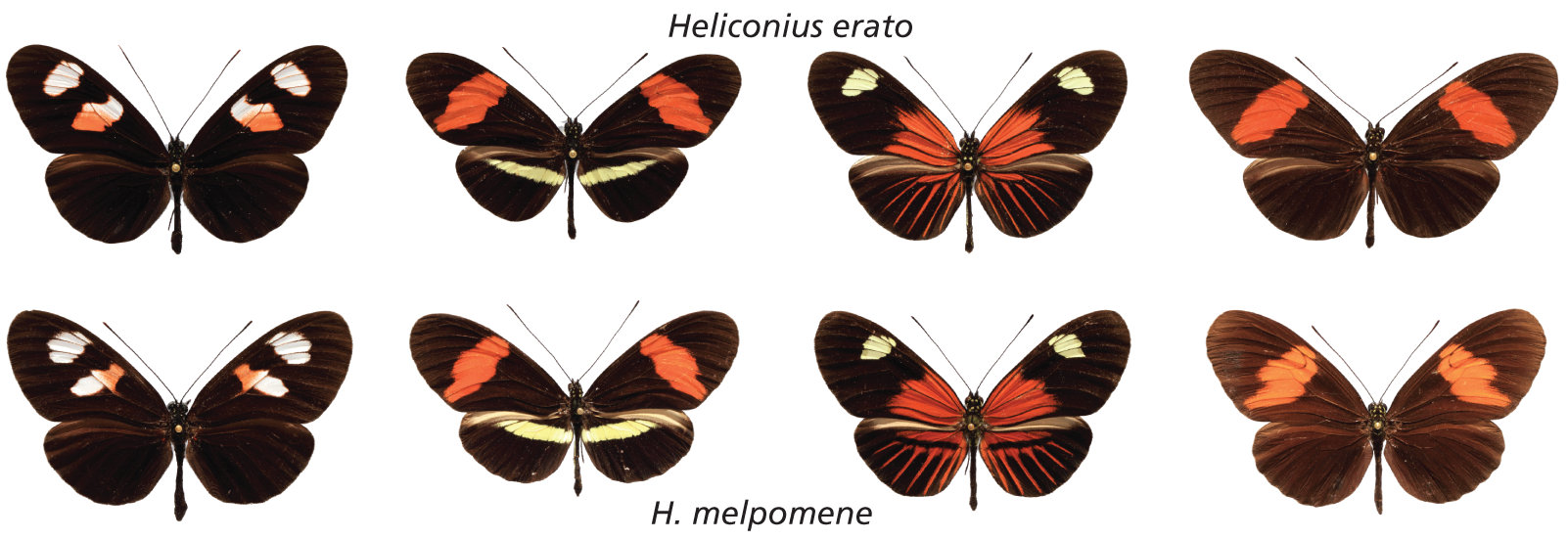
Müllerian
mimicry in two species of Heliconius butterflies
Both species are unpalatable to
birds, and advertise their unpalatability with striking wing
patterns. Where both species are relatively rare, each gains
an advantage by mimicking the other so that predators learn
(often after only a single encounter) to avoid similar
patterns in either species. Multiple localized morphs occur
in both species, so that opportunities for predator learning
are increased. Contrast this with Batesian Mimicry,
in which a palatable species mimics an unpalatable
model.
Müllerian mimicry
has long been recognized in many species. The genetics of
the phenomenon has only recently been studied. In Heliconius
spp., alleles responsible for components of the warning
pattern originated in one species and were transferred to
the other by hybridization.